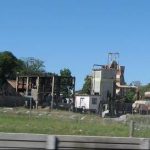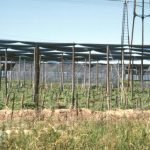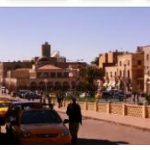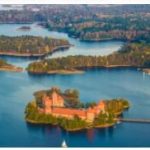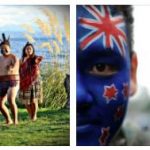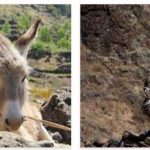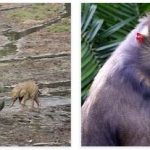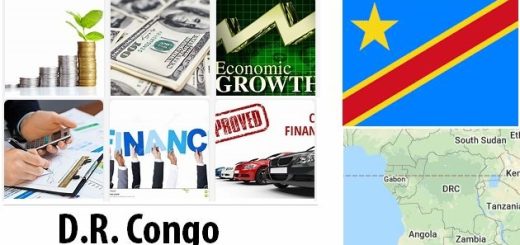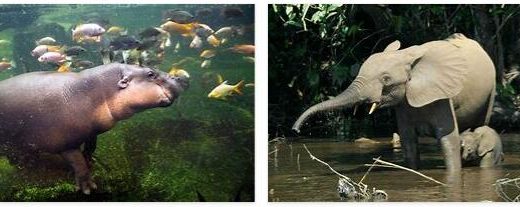Cameroon Overview
Animals and Plants
Cameroon’s nature
While the south of Cameroon is still largely covered by tropical rainforest, a savannah landscape is growing in the dry north. These different landscapes are the habitat of a diverse flora and fauna. Rivers and lakes as well as the coastal section in the southwest are also used as habitats. There are also mangrove swamps there.
In Cameroon there are also a variety of species that are unique to them. They are called endemic species. A particularly large number of endemic species live in the Bakossi Mountains in the southwest.
Which animals live in Cameroon?
In total, more than 400 mammals have been counted in Cameroon, 250 reptiles (reptiles), 200 amphibians and more than 900 bird species, including 150 migratory birds. There are many endemic species, that is, species that are unique to Cameroon.
Elephants, giraffes, lions, leopards, spotted hyenas, buffalo, rhinos and antelopes live in the savannah in the north. For the most part, however, they only occur in the protected areas specially set up for the animals. The giant eland is one of them. It occurs in only three areas in the whole of Africa, one of which is the Bénoué National Park in Cameroon. A monkey that inhabits the savannah as a habitat is the hussar monkey.
Another animal world is at home in the tropical rainforest. A number of monkeys such as gorillas, chimpanzees, mandrills and monkeys live here. The Preuss colobus monkey only lives in western Cameroon. In the southeast the bongo is on the way. It’s a species of antelope. He has white stripes on his fur. Another inhabitant is the giant forest pig. It will be more than two meters long! Snakes also live in the rainforest, for example the green bush viper and the rock python. You can also find long-tailed pangolins.
Not only do numerous fish live in the rivers, but also crocodiles, including the Nile crocodile and the armored crocodile. In the Atlantic before Cameroon’s coast several species of whales and sea turtles. Three species, including the leatherback turtle, lay their eggs on Cameroon’s beaches.
What is growing in Cameroon?
In the dry savannah landscape of the north, mainly grasses and small shrubs grow. In between there are isolated trees.
Lush rainforest grows in the tropical rainforest of the southern half of the country. Mahogany and ebony trees are among the trees that grow high here. Mosses and lichens, like bromeliads and orchids, are other plants. There are also bamboo forests in Cameroon.
There are mangrove swamps on the coast. Here, red, black and white mangroves provide a habitat for animals such as oysters and crabs, as well as water birds, turtles and manatees.
Economy
Petroleum, cocoa and wood
Cameroon’s economy is based primarily on two things: the deposits of oil and agriculture. Oil is still the main source of income from exports, i.e. the sale of goods to other countries.
70 percent of the population work in agriculture. Many people grow small fields mainly for their own needs and sell small surpluses on markets. For the entire economy, agriculture only achieves just under 17 percent, although so many people work in this area. Cocoa, bananas, cotton, coffee and rubber are exported.
Another important area is wood. Cameroon still has large rainforests, but they are endangered because many trees are being felled. They are sold as precious woods.
Problems of the economy
Although Cameroon has very good conditions with its oil reserves and is not one of the poorest countries in Africa, the economy is struggling with numerous problems. Above all, this includes corruption. Customs are often charged with arbitrary fees.
Not only is the number of unemployed high, but also the number of poor people. 24.8 percent live below the international poverty line on just $ 1.90 a day to live.
Logging that is not allowed also endangers the forests. The transport routes also cause difficulties: many roads are not tarred and become impassable in heavy rain.
Industry in Cameroon
Industry contributes 26.5 percent to total economic output, although only 13 percent work in this area. In addition to the oil produced, imported bauxite, from which aluminum is made, is also processed. There are also food and clothing factories. The felled wood is also processed further.
Cameroon foods
What do you eat in Cameroon?
Staple foods in Cameroon are yams, cassava, corn, millet, plantains, and rice. As in other African countries, fufu is a common dish. It is a porridge made from yam bulbs or cassava. Plantains can also be included. You eat this porridge by forming small balls with your right hand. You then dip it in a soup that comes with it. It is cooked from peanuts or palm oil fruits, for example.
Meals
The main meal in Cameroon is the hot dinner. Eating with cutlery is becoming more common, but many people, especially in rural areas, still eat with their right hand. Often people also help themselves from a large pot around which they sit together. For more articles on Cameroon and Africa, please visit thesciencetutor.
For breakfast you tend to eat something small on the hand. This can be a kind of donut or Accra banana made from banana and flour or other pasta such as bread or cake.
What is Ndolé?
Ndolé is considered the national dish in Cameroon. It is particularly popular and often eaten. Ndolé is also the name of a plant. Their leaves are needed for eating Ndolé. The bitter leaves are cooked several times so that they lose their bitter taste. They are then mixed with a paste made from ground peanuts and spices. Then there is meat or fish cut into strips. Ndolé is usually served with rice and plantains, but here with rice and french fries.
How do you eat cassava?
Cassava is one of the staple foods in Cameroon. Another name is cassava. The tuberous roots are harvested from the cassava plant. They are high in starch, so they are very nutritious.
A dish made from cassava is gari. To do this, the cassava is peeled, ground, dried for two days and then fried. This creates a white powder that has a long shelf life. You then stir it back into a paste with water. You can also add sugar, peanuts or corn flour.


